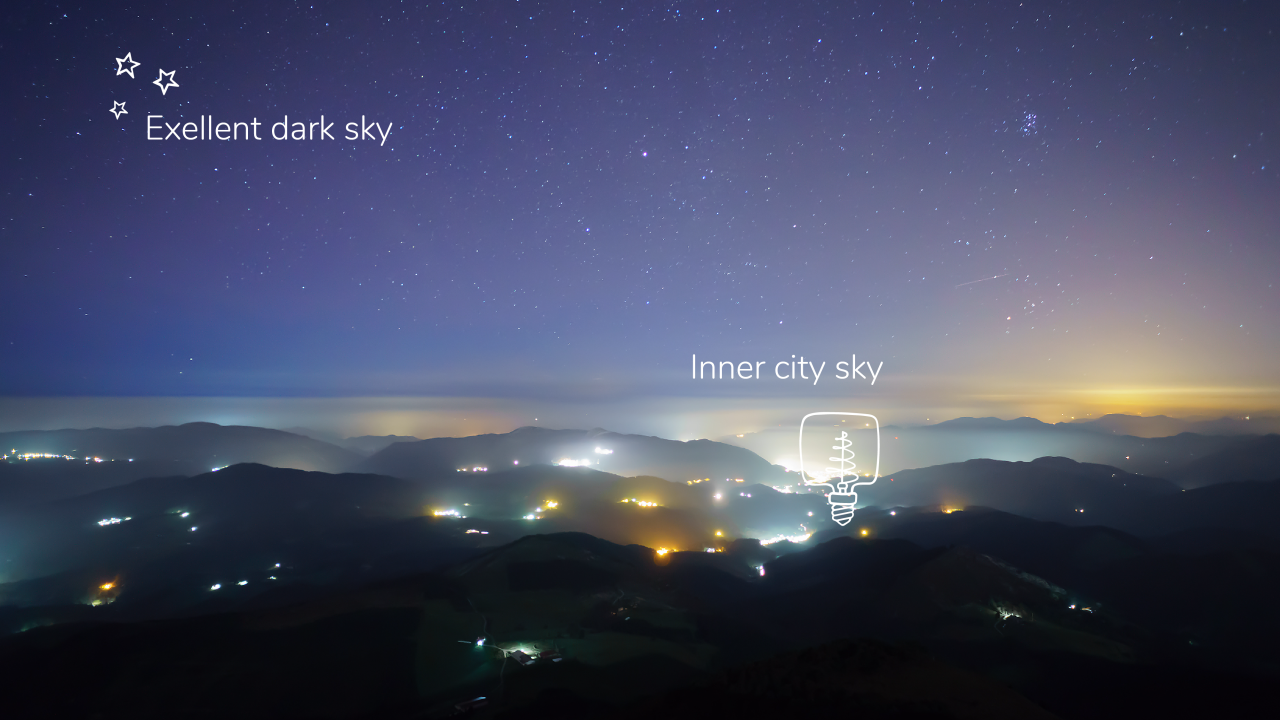Why is this an issue?
Humanity has learned how to extend the daytime with artificial light, but this has also created a new problem – light pollution. Light pollution is not only an obstacle for stargazing, but also a threat for the environment and our health.
Artificial light reduces the production of melatonin, a hormone that regulates the sleep and behavior of all living organisms. This can disrupt the natural rhythms of wildlife and humans, and cause various negative effects.
Dark-Sky approved
There is something we can do to reduce light pollution and protect the night sky. We can choose outdoor lighting that meets the standards of the International Dark-Sky Association (IDA) for minimizing glare, light trespass, and skyglow.
These are the main sources of light pollution that can be controlled by the design and direction of the light fixture.

BUG (backlight, uplight, glare) rating
Backlight is the light that is directed behind the fixture, which can cause light trespass into unwanted areas, such as your neighbor’s window or a natural habitat.
Uplight is the light that is directed above the horizontal plane of the fixture, which can cause skyglow and obscure the view of the stars.
Glare is the light that is emitted from the fixture at high angles, which can cause discomfort and distraction to drivers, pedestrians, and wildlife. A low BUG rating means that the fixture has a minimal amount of backlight, uplight, and glare, and therefore reduces light pollution.

Color temperature
Another factor to consider when choosing outdoor lighting is the color temperature of the light source. Warm light has a lower color temperature (below 3000K) and appears yellowish or reddish, while cool light has a higher color temperature (above 4000K) and appears bluish or white. Cool light has more blue wavelengths, which can have negative effects on human health and wildlife behavior. Therefore, dark sky approved lighting should have a color temperature of 3000K or lower.
The shape of the luminares
The shape of the light fixture also matters for reducing light pollution. Dark sky approved lighting should have a fully shielded or full cutoff design, meaning that no light is emitted above the horizontal plane of the fixture. This prevents uplight and glare and directs the light downward where it is needed. A fully shielded or full cutoff fixture has a flat lens or cover that does not protrude below the housing of the fixture.

How to Choose Dark Sky Approved Outdoor Lighting
To reduce the harm of light pollution:
• Choose dark sky approved outdoor lighting that meets the International Dark-Sky Association standards with a low BUG rating.
• Consider warm color temperature lights (3000K) that have less blue wavelengths.
• Choose fully shielded or full cutoff fixtures that direct light downward and prevent glare and skyglow.
• For the best result, use outdoor lights that are connected to a timer or motion sensor to save energy and avoid unnecessary light emission.

